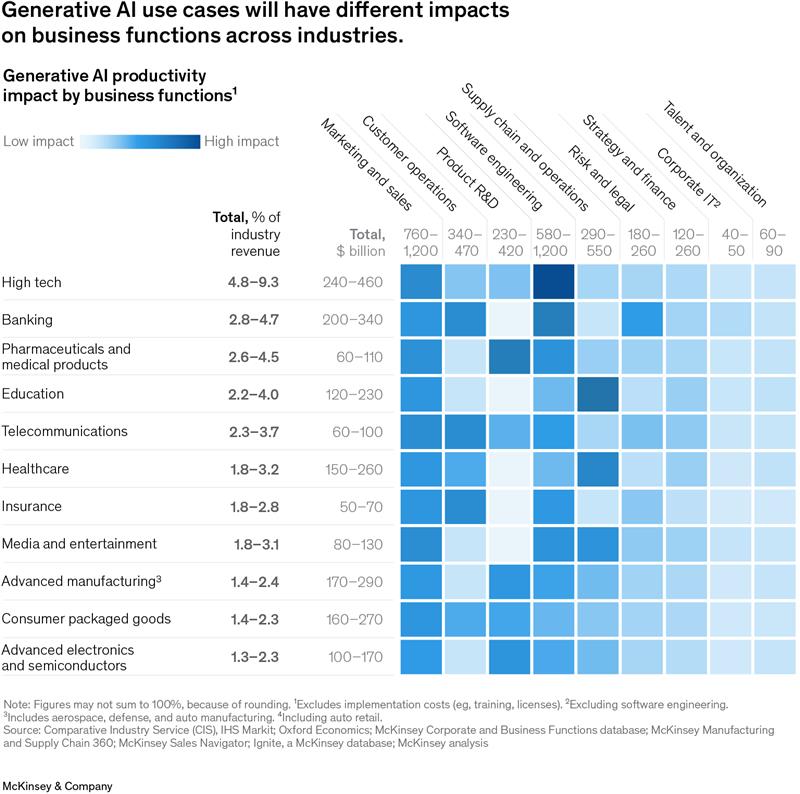In the heart of a bustling logistics control room in 2025, an AI agent flags a critical supply chain delay. Another agent updates stakeholders, reroutes deliveries, and makes real-time adjustments to demand projections all at the same time. This is the application of agentic AI, not science fiction. Salesforce’s open ecosystem is the backbone that subtly changes the future of digital labour. Along with enterprise interoperability, which is responsible for this seamless operation.
Welcome to the era where value is being driven by intelligent agents rather than just apps. In this blog, we examine how Salesforce is bringing that to fruition through transparent protocols, reliable alliances, and scalable, modular AI systems.
Unlocking Agentic AI At Scale With Model Context Protocol (MCP)
Software agents with the ability to plan, act, and learn on their own, known as agentic AI, are no longer just theoretical. The missing component was scalable, reliable system-to-system communication. Then came Salesforce’s Model Context Protocol (MCP).
MCP makes it possible for several agents, created by various developers, to interact securely, have common objectives, and act independently but cooperatively. The disarray of ad hoc API calls is replaced by this protocol, which standardizes the way agents exchange prompts, constraints, and results.
IDC reports that 68% of businesses have fragmented AI pipelines; MCP’s agent-to-agent orchestration directly addresses this issue.
Salesforce has enabled businesses to deploy interoperable agents across cloud, CRM, and analytics environments while preserving data security and transparency by establishing a common runtime context.
How Agentforce 3 Solves Enterprise AI Visibility And Control Challenges
Salesforce addresses the AI elephant in the room, which is black-box behaviours and a lack of visibility with Agentforce 3. Agentforce provides full agent observability, which logs what agents do, why they act, and what data they touch. It is intended for risk managers and IT teams.
Important characteristics include:
- Dashboards of Telemetry for Agent Activity in Real Time: These dashboards offer detailed insight into real-time user interactions, agent tasks, and decision paths. This enhances AI observability and facilitates the prompt diagnosis of irregularities or unexpected behaviours.
- Declarative Regulations for Governance and Compliance: It is simpler to maintain compliance with GDPR, HIPAA, or SOC 2 standards when teams can establish guidelines and limitations without having to write code. Security officers can now implement AI governance at scale without interfering with workflows thanks to this.
- Safe Scopes to Limit Each Agent’s Access: Businesses can limit data exposure and guarantee that agents only interact with authorized datasets or APIs by implementing fine-grained access control. This significantly lowers the possibility of model drift or data leakage.
According to Gartner (2024), 74% of businesses cite “lack of trust in AI decision-making” as a reason for their inability to grow. This is directly addressed by Agentforce 3’s transparency tools, which give businesses more assurance and accountability when developing, deploying, and monitoring AI agents.
This kind of control is essential in a world where workflows are becoming more autonomous.
Building AI-Ready Architecture With Agent2Agent (A2A) And AgentExchange
Envision finance-trained agents communicating with logistics agents on their own, without the need for human intervention. That is what Agent2Agent (A2A) interoperability is all about.
Salesforce provides a low-code platform called AgentExchange that enables developers to publish, find, and reuse agents across departments or even businesses. This speeds up cross-functional AI automation and removes redundant builds.
A2A’s characteristics include:
- Agent orchestration based on events.
- Unified protocol for communication.
- plug-and-play Agent connectors.
According to Forrester, autonomous agents will operate more than 35% of enterprise workflows by 2026. Businesses will keep them in sync by using A2A.
Real-World Integrations: How Enterprise Partners Are Scaling AI Interoperability
Salesforce’s open ecosystem is only as robust as its integrations, and the number of partners using MCP and A2A to scale AI is expanding quickly.
Business associates promoting trusted interoperability:
- Amazon Web Services (AWS): Using MCP to supply real-time computing power to secure cloud-based AI agents.
- Google Cloud Vertex AI: Comprehensive integration for composable agent scalable deployment, monitoring, and model training.
- OpenAI and Anthropic: Providing fundamental LLMs for agent design in Agentforce.
- Slack: Integrated feedback loops and agent triggers with Slack GPT.
- Stripe and PayPal: Payment processing agents with built-in fraud checks and audit trails.
- Databricks and Snowflake: Data layer agents that communicate with enterprise lakes directly to provide insights as needed.
- Tableau and MuleSoft: Integrated agent connectivity with ETL pipelines and dashboard reporting systems.
According to Q2 2025, more than 85% of Salesforce AppExchange partners now provide agent-based modules or integrations.
From Closed Systems To Composable AI: Why Open Ecosystems Drive Faster Time-To-Value
Traditional AI deployments required custom workflows and months of integration. On the other hand, businesses can implement modular agents that integrate with pre-existing environments thanks to Salesforce’s decomposable AI ecosystem.
This vendor-neutral strategy guarantees system interoperability, expedites onboarding, and lowers engineering overhead.
Advantages of decomposable AI:
- 60% Shorter Integration Time: By using predefined agent modules that integrate with their current digital infrastructure, businesses can avoid time-consuming one-off builds. This significantly shortens the development lifecycle and lowers technical debt expenses.
- Quicker Cycles of Experimentation: Teams can quickly iterate, A/B test new workflows, and optimize results in real-time without having to rebuild their entire stack when using modular AI components. This minimizes operational disruption while promoting innovation.
- Increased AI Component Reusability: Agents can be repurposed or reconfigured across various business units or verticals after they are deployed, which speeds up return on investment. This flexibility underpins future-proof AI tactics and is essential to a modular AI architecture.
According to McKinsey (2025), businesses that use composable AI platforms report a 32% faster time-to-value than those that use monolithic AI systems.
Preparing For The $6 Trillion Digital Labour Economy With Salesforce-Powered Agents
Globally, the digital labour market is predicted to grow to a value of over $6 trillion by 2030. The emergence of agents driven by Salesforce signifies a significant change in how companies view productivity.
Agents will replace routine, rule-based tasks, such as autonomous lead routing and automated financial reconciliations, freeing up humans for strategic work.
Important industries affected:
- Healthcare: AI-powered agents are simplifying everything from patient triage to claims approvals in the healthcare industry (intelligent diagnostics, claims automation). This speeds up the patient care cycle by up to 25% and lowers administrative overhead.
- Retail (AI merchandising, customer support agents): Real-time personalization of offers and dynamic inventory adjustments are now possible with intelligent agents. AI-driven engagement is increasing customer retention for retailers by 30%.
- Logistics (fleet automation, supply chain bots): Real-time route optimization and predictive maintenance are made possible by agent-based systems. Delivery delays are reduced, and operational logistics expenses can be reduced by up to 15% as a result.
- Finance (real-time reconciliation, compliance auditing): Autonomous agents handle reconciliation at scale, audit transactions, and identify irregularities. A 60% decrease in manual errors has been reported by financial institutions that use these systems.
Deloitte estimates that businesses that implement agentic AI extensively could see a 40% boost in operational efficiency in just three years.
Why MetroMax Solutions Is Ready For Agentic AI-Driven Digital Transformation
MetroMax Solutions is a strategic partner for businesses wishing to modernize with assurance as the enterprise sector shifts toward agentic AI. With extensive knowledge of enterprise system orchestration, process automation, and Salesforce deployment, MetroMax Solutions helps companies fully utilize AI-powered agents.
We make sure that clients seamlessly move from static systems to dynamic, intelligent ecosystems, whether that is through the deployment of agentic modules across logistics, operations, and finance, the integration of MCP-based workflows, or the creation of Agentforce dashboards.
Conclusion
Interoperability of trusted agents is becoming essential as businesses speed up their digital transformation. The foundation for transparent, scalable, and enterprise-ready modular, decomposable AI systems is being laid by Salesforce’s open ecosystem, which is fueled by Model Context Protocol, Agentforce 3, and AgentExchange. Salesforce is promoting an architecture built for the future of digital labour, from facilitating plug-and-play enterprise AI integrations with industry leaders like AWS, Google Cloud, and Stripe to enabling real-time agent-to-agent communication. In addition to accelerating AI time-to-value, companies that adopt this open approach now will establish themselves as leaders in the $6 trillion digital agent economy. Your company can confidently scale AI adoption, ethically, effectively, and interoperably, with knowledgeable ecosystem partners like MetroMax Solutions.





